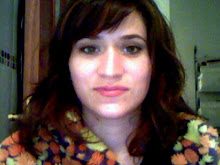Designers Tap into the Saudi Market: Abaya Bling
This proves there is a market for just about everything. From The Telegraph. On a related note, Sarkozy´s comments about the burka last week stirred quite a bit of controversy. France and the United States at this point seem to be pulling at opposite ends of the abaya in their efforts to reach out to Muslim cultures.
Sarkozy was quoted at Versailles as stating that the burqa would not be welcome in France and that the clothing converts women into prisoners behind a screen-a subservient condition that is incompatible with France´s values of equality of the sexes. Unfortunately, the truth behind these statements is that religious freedom of expression seems to be at dogmatic odds with France´s historical precondition of cultural assimulation for immigrants. In France, Muslim acceptance is strongly linked with the immigration debate and has philosophically backed France against the wall.
While France is stuck trying to draw a logical flowchart between is founding principles of ¨liberté, égalité, fraternité¨ and policies dealing with the veil, US President Obama took a turn in a different PR direction in his Cairo Speech when he stated that he would not interfere with a woman´s right to wear the veil in the United States. The United States, although based on some of the same secular principles as the France, has never hidden its light embrace of faith in the public sphere, feeling less internal conflict than its transatlantic neighbor-albeit normally reserved for the exercise of Christianity. However, with Obama´s speech, he ensured that Islam would and should receive similiar treatment.
Perhaps the most fascinating detail in these two dramatic policy statements/outbursts by these traditional Western ¨frenemies¨ is the CHOICE of garment for Muslim women that was evoked in said presidents´ speeches. While Sarkozy evoked the burqa (the most extreme level of conservatism in Muslim covered dress for women), Obama used the hijaab (with a pronunciation glib) as his frame of reference for a Muslim woman´s right to exercise her religion through her dress. A chance that the choice of images they summon in clothing might be symbolic of their insecurities and respective levels of threat? Perhaps. In any case, abaya blinging out is certainly keeping French designers happy and in business in the meantime.
¨A horsewoman in a flowing, made-to-measure Islamic gown atop a snorting steed opened the fashion show on Thursday at the George V Hotel in Paris.
Abayas are the body-covering black robes some Muslim women don over their clothing in public, usually accompanied by a head scarf or niqab, the face veil that covers all but the eyes.
Designers who tried their hand at making over the abaya, which is required in Saudi Arabia, included Christian Dior's artistic director John Galliano, French luxury labels Nina Ricci and Jean Claude Jitrois and Italian houses Blumarine and Alberta Feretti.
The show began with a bang, as the carrot-topped cavaliere - decked out in a Galliano-designed abaya exploding with firework of coloured sequins and dangling fringe - rode her mount into the hotel's subterranean salon.
Twenty models followed on foot, wearing abayas heavy with rhinestones or airy in gauzy fabrics.
"I realised that most of the Saudi clients are wearing designer brands, but they're covered by a black abaya," said Dania Tarhini, the show's organiser and a general manager of Saks Fifth Avenue in Saudi Arabia. "It is an obligation to wear the abaya there, but let them feel good about it."
The timing of the Paris show was propitious: four days earlier, Nicolas Sarkozy, the French president, struck a nerve in the Muslim world by declaring that full-body veils such as the burka are "not welcome" in France, saying they make women prisoners. A top Muslim group in Britain called Mr Sarkozy "patronising and offensive." Lebanon's most influential Shia cleric called on Mr Sarkozy to reconsider his comments....¨ (click here for full article)




you know I really find it a great challenge to design Abaya, coz it is simply the cover, or the fold and it is always hard for designers new to the culture to create a classic cut, bold simple and tactile :)
interesting article